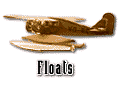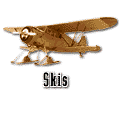 |
||
 |
INTRODUCTION |
 |
Welcome to Flight! Did you know that the Canadian Ninety-Nines are an organization of licensed women pilots or that the object at the top of a helicopter is actually a wing that rotates? The beauty and freedom of soaring birds has always drawn our admiration and envy. The freedom to move in any direction over all obstacles is a capability that all of us would enjoy. Early attempts to defy gravity involved the invention of ingenious machines, such as ornithopters. Stories of Daedalus & Icarus, magic carpets, witches on broomsticks, and other forms of movement through the air have sparked our imaginations.
Be prepared to learn along with your class as you discuss the history of aviation and build your own planes. This is a unit that focuses on Science and Technology curriculum expectations, but is also integrated with other subjects including Social Studies, Language, and Math. Have fun visiting the various Web sites and enjoy the activities.
Special thanks to Mark Caine, Bill Sparks and Dr. Egnatoff for their contributions.
AbstractThis unit on Flight focuses on hands-on activities while learning about the history of aviation as well as how airplanes work. It is aimed for Grade 6 students but would be suitable for students aged 11-16. The time frame is 4 weeks but is easily adaptable to be lengthened or shortened. |
AimTo excite students about airplanes - what makes them fly and the people who made contributions to aviation.- - |
Objectives
|
RationaleFlight was chosen since it is one of the topics given by the new Ontario curriculum for Science and Technology for Grade 6 students. Hands-on activities are used because students learn better when they are able to manipulate materials and take ownership of their creations. It is important to incorporate the history of flight as well by studying famous Canadians and well-known pilots. Science, math, and language are easily integrated as students record their plans, predictions, and observations in a design report while designing and evaluating their projects. Their findings can then be presented in the form of a graph to compare different planes. Each lesson takes 30-45 minutes allowing the unit to span over a few weeks. |
Homepage --- Teaching Units --- Flight --- Authors